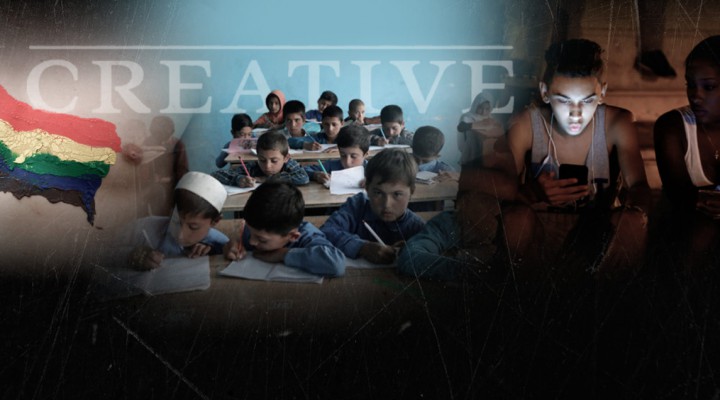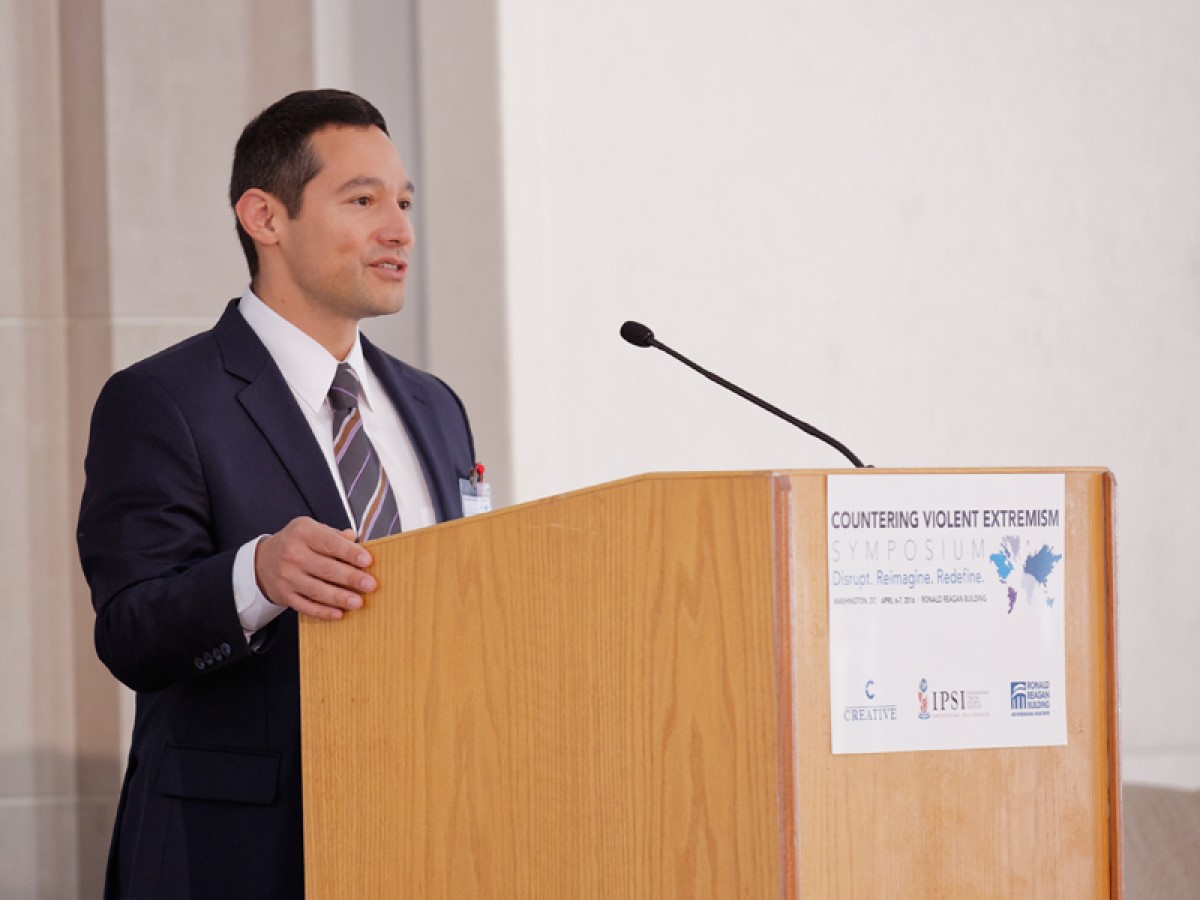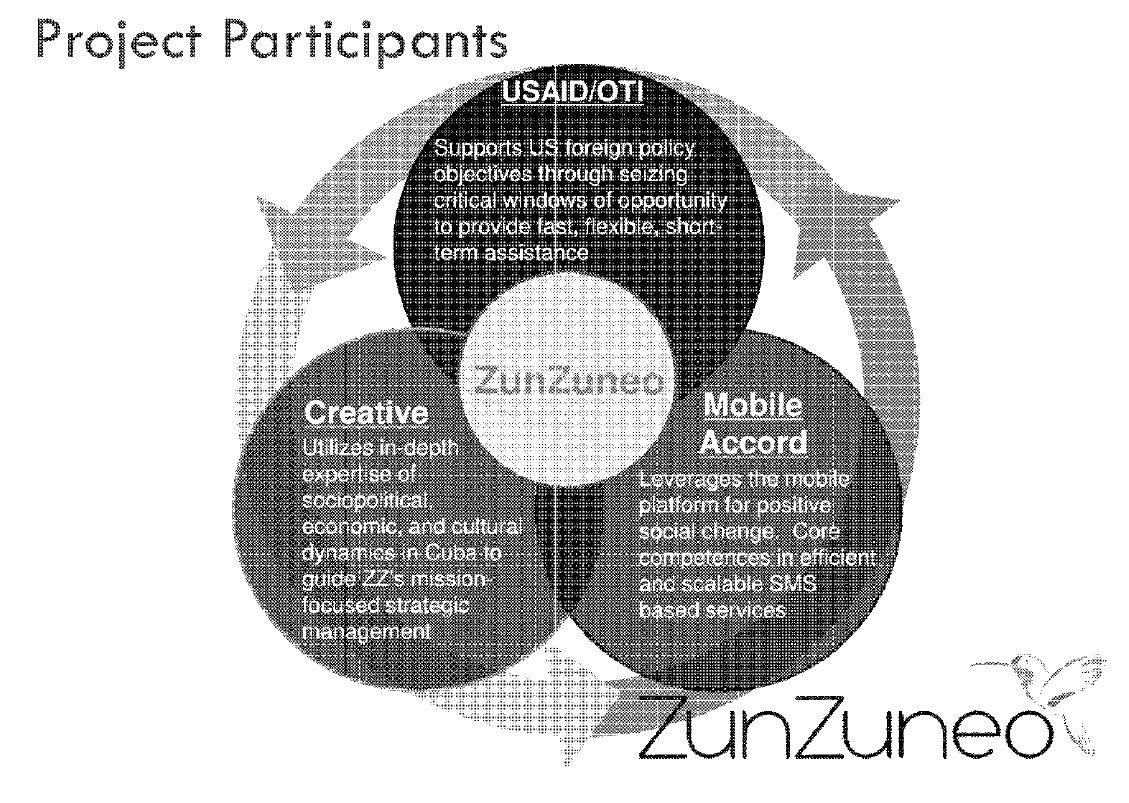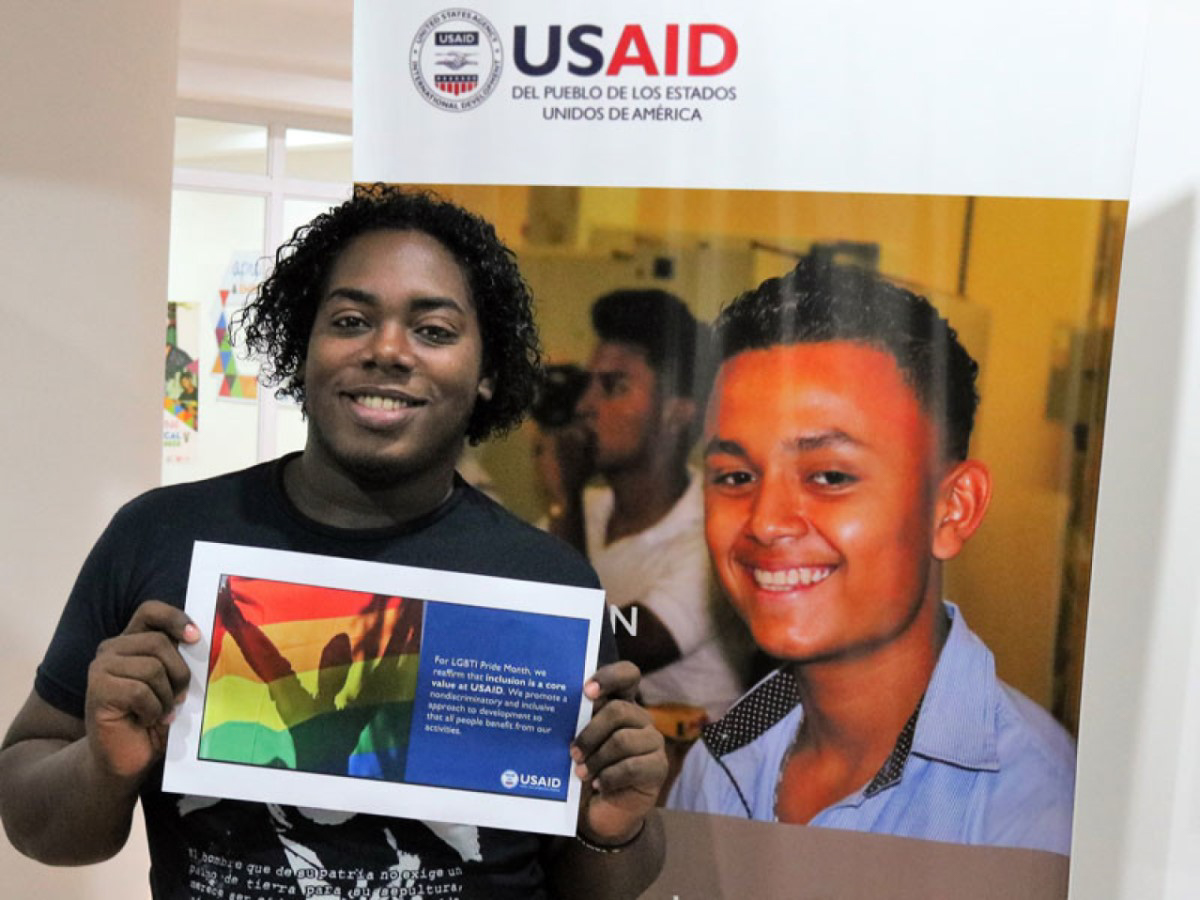Creative Associates International (CAI): It’s Not Exactly the CIA, But Close Enough

While mercenary armies like Blackwater have at least been subject to inquiry, making the company’s name infamous around the world, Creative Associates International has largely flown under the radar — exactly where the organization’s board wants it to be.
MPN- You have likely not heard of them, but Creative Associates International (CAI) is one of the largest and most powerful non-governmental organizations operating anywhere in the world. A pillar of soft U.S. power, the group has been an architect in privatizing the Iraqi education system, designed messenger apps meant to overthrow the government of Cuba, served as a front group for the infamous Blackwater mercenary force (now rebranded as Academi), and liaised with Contra death squads in Nicaragua. As such, it has functioned as “both as an instrument of foreign policy and as a manifestation of a broader imperial project,” in the words of Professor Kenneth Saltman of the University of Illinois, Chicago.
A G.O. posing as an N.G.O.
An ordinary person arriving at Creative Associates’ website — festooned as it is with images of smiling African children, Asian kids being taught how to read and happy Latino farmers harvesting their fields — would likely conclude that the outfit is some sort of progressive non-profit charity tirelessly working to empower vulnerable people around the world.
Yet subjecting the organization to a little more scrutiny, some red flags immediately begin to emerge. First is the indecipherable word-salad it uses when describing what it actually is in its “Us At A Glance” section. “Creative Associates International provides outstanding, on-the-ground development services and forges partnerships to deliver sustainable solutions to global challenges,” it says, as if this is any sort of answer to the question “Who are you?” Continuing, it boasts that “Creative is recognized for its ability to quickly adapt and excel in conflict and post-conflict environments” (emphasis added) — a statement that sounds worryingly like one private mercenary armies use to advertise their services.
In today’s world, the United States government does not use only overtly violent methods (wars, invasions, coups, training of domestic death squads, etc.) to achieve regime change; it also uses so-called “soft power” techniques — the training of leaders, education, economic coercion, etc. — to maintain a hegemonic grip on the world. And Creative Associates International is a crucial part of that system.
The company was founded in 1979 by M. Charito Kruvant, the scion of a wealthy landowning Bolivian family who fled the country after the progressive revolution there in 1952. Today, it has grown into a massive, for-profit behemoth working in at least 85 countries with a full-time staff of around a thousand (and countless more contractors). And while it is technically a private institution, the vast majority of its funding comes directly from Washington. Over the past 20 years, the government has given Creative Associates $1,998,138,515 in contracts, according to Tracey Eaton, a journalist who has studied the company’s activities in Cuba. Of this, USAID has supplied over $1.8 billion.

Leland Kruvant, acting President of CAI, speaks at a CAI symposium on violent extremism with top U.S. government officials in attendance
Furthermore, the organization’s global advisory board underscores that this is not exactly some progressive arts charity, as its name and branding often imply. Of the seven members of its board, six are senior U.S. officials. These include Barack Obama’s assistant secretary of state for South and Central Asia, a four-star general, and the ex-under secretary of state for Civilian Security, Democracy and Human Rights.
“Creative Associates is among the top U.S. government contractors entrusted with trying to help engineer political transitions. The company is part of that lucrative enterprise dubbed the ‘Democracy Industrial Complex,’” Eaton told Mintpress.
In a roundabout way, former head of USAID Andrew Natsios (another member of CAI’s board) seemed to agree with Eaton. When the Trump administration was considering cutting the foreign aid budget, Natsios argued vehemently against it. “What you’re basically doing is eviscerating the most important tool of American influence in the developing world, which is our development program,” he said. “I don’t think they understand what the role of USAID is, what USAID’s mission directors are. USAID’s mission directors are among the most influential foreigners in the country,” he added, apparently confirming that the organization’s focus is less helping others and more promoting Washington’s interests through American social and economic power.
“Even losing wars make money”
Afghanistan is by far and away the country where Creative Associates’ projects have secured the most funding. Combined with its Iraq enterprise, the company has raked in well over half a billion dollars worth of government contracts.
“Even losing wars make money. If you go to the D.C. area, in the Virginia and Maryland suburbs, there are all these types of companies that exist because of the war. And the development industry got very wealthy off of it,” said Matthew Hoh, a former Marine captain and Department of Defense and State Department official. “The whole grift of it was simply breathtaking,” he added. In 2009, Hoh resigned his post in Afghanistan with the DoD in protest of the U.S.’ escalation of war.
Creative Associates has secured a number of lucrative contracts in the reconstruction of both countries, particularly with regard to their education systems — including building schools, writing and printing textbooks, training teachers, and administering and managing education systems. Hiring an American company to do this work rather than giving local governments the funding and power to plan their own futures fulfills a very important function, according to Saltman, who noted that this allows the U.S. to essentially retain complete control over Iraqi and Afghan society. Labelling it a classic example of “disaster capitalism,” Saltman describes the remodeling of Iraqi society as “a radical free-market experiment bent on demolishing the public sector and shifting control of civil society nearly completely to the private sector,” and “an attempt to essentially hand a nation over to corporations.”
Creative Associates schoolbooks in Afghanistan have purged any mention of the past few decades of Afghan history or the Taliban from its textbooks. “You can’t buy that kind of thought control — unless you have a few hundred million,” wrote one American educator.
Saltman also noted that working in warzones necessitated a high degree of security, and that companies like CAI were likely giving tens of millions of dollars of their contracts straight over to private mercenary groups like Blackwater.
Hoh was keen to stress that many people working at the lower levels of programs like these were well intentioned, but that as one went higher up the commitment to the benefit of others waned significantly. “Groups like CAI would do the [genuine] work but they would also be a front. It is a way for the CIA and other security services to get people into countries,” he said. In 2009, it was reported that Creative Associates’ headquarters in Peshawar, Pakistan, was being used as a front for Blackwater to stage military operations along the Afghan/Pakistan border.
Creative Associates have also secured lucrative contracts to work in other war zones, such as Libya and Yemen.
Cuba: rappers and regime change
For years, Creative Associates International worked closely with the CIA and other government agencies, operating and overseeing a complex set of projects targeting Cuba, all with one specific goal: the overthrow of the Communist government (or “sociopolitical change tak[ing] place in Cuba,” as its own documents preferred to describe its mission).
Creative Associates’ most infamous project was perhaps its creation of a Twitter-like app called Zunzuneo. Zunzuneo first operated as a very useful communication tool but, slowly, its creators injected it with regime-change messages, with the plan to eventually direct all users to attend demonstrations and foment a Caribbean color revolution. The app’s user base grew quickly, attracting 55,000 people by 2012 — a huge number for a poor country with little internet access. The U.S. government attempted to hide its own role in the app’s creation, secretly trying to convince Twitter CEO Jack Dorsey to buy into the company as a front man. It is not clear what the outcome of these negotiations was. However, the Zunzuneo project was abruptly abandoned, leaving Cubans wondering why their service provider suddenly stopped working. Only two years later, through an investigation by the Associated Press, did the truth come out.

USAID grant documents show CAI’s involvement in the ZunZuneo project. Source | Cuba Money Project
That was far from the last nefarious project Creative Associates was intimately involved in, however. Between 2009 and 2014, it was charged with recruiting regime-change operatives on the island. Creative Associates brought young activists from all over Latin America to Cuba under the guise of a phony HIV/AIDS awareness drive, which internal memos describe as the “perfect excuse” to ferry their people in and out of the country.
Creative Associates has also attempted to use the Cuban hip hop community as a vehicle to drive regime change to the Caribbean nation. In 2009, it sent Serbian music promoter and color-revolution expert Rajko Bozic to the island, where he attempted to identify and bribe rappers into joining his project.
Rap had exploded as a genre on the island in the previous decades, partly because of its new sound and partly because Afro-Cuban rappers were using the medium to bring attention to taboo subjects such as racism. Creative Associates — intersectional imperialists par excellence — smelled an opportunity to use it as a wedge issue.
Bozic found a handful of artists willing to participate in the project and immediately began aggressively promoting them and getting their music played on Western radio stations. He also bribed big Latino music stars to allow the rappers to open up for them at their gigs, thus buying them extra credibility and exposure. Zunzuneo helped in this endeavor, sending users links to this exciting new music that, it seemed, the whole island was buzzing about.
While Creative Associates’ role in this was exposed, the general tactic of using rappers for regime change is still clearly active. Grant publications from USAID and its sister organization the National Endowment for Democracy (NED) show that both groups are using hip hop as a vehicle for their goals. For instance, one project from the NED’s latest publications, entitled “Empowering Cuban Hip-Hop Artists as Leaders in Society,” states that its goal is to “promote citizen participation and social change,” and to “raise awareness about the role hip-hop artists have in strengthening democracy in the region.” Of course, for the United States, “democracy” in Cuba is synonymous with “regime change.”
In July of this year, Cuban rappers led a bungled insurrection. The movement’s face was Cuban expat Yotuel, an artist who is openly working with the U.S. government and whose song “Patria y Vida” was immediately promoted upon its release by American politicians and senior officials in Washington. “Patria y Vida” is consistently referred to in U.S. reports as a success story in “democracy promotion” activities.
The Bay of Tweets: Documents Point to US Hand in Cuba Protests
It is not clear whether Creative Associates was directly involved in the July protests in Cuba. They appear to be relatively embarrassed about the press they have received; in fact, there is no mention of any Cuban activities whatsoever — historical or current — on the company’s website.
Latin America: intersectional imperialists
The United States invaded Nicaragua in 1933, setting up the Somoza dictatorship to look after its interests. With the Sandinista revolution in 1979, the U.S. lost control over the small Central American country. In an effort to turn back the clock, Washington funded, armed, trained and supported far-right Contra death squads infamous for their brutality. Direct support for the Contras ended in 1989. But at exactly the same time, the U.S. began employing Creative Associates to conduct all manner of operations involving the paramilitary organization, efforts that helped the U.S.-backed candidate, Violetta Chamorro, win the 1990 election. Local laws prohibiting foreign funding of political parties were circumvented by the establishment of a wide range of non-governmental organizations focusing on voter registration and political education, including programs aimed at uniting the anti-Sandinista opposition (including the Contras) behind Chamorro.
Now that the Sandinistas have returned to power, Creative Associates is back with avengence. As Nicaragua-based journalist Ben Norton told MintPress:
Creative Associates has been very active in destabilization operations targeting the Sandinista government. With plentiful funding from USAID, the CIA cutout has cynically exploited sensitive issues to increase social divisions, intentionally driving a [wedge] between Nicaraguans and their Sandinista government with programs targeting racial and ethnic minorities, people with disabilities, the LGBT community, and at-risk youth.”

A Nicaraguan man poses at a USAID event about LGBT issues in 2018. Source | CAI
Norton noted that, while Creative Associates claims to be working purely to improve Nicaraguan society, it collaborates exclusively with opposition-aligned groups, thus effectively subsidizing the country’s right-wing. “One of several USAID programs run by Creative Associates in Nicaragua has targeted vulnerable groups in Nicaragua’s Caribbean Coast. The CIA cutout plays off differences there, in the Miskito indigenous community and the Afro-Nicaraguan population,” he added.
Likewise, in El Salvador, U.S. efforts are branded as nonpartisan. But rather than help the leftist FMLN Party, Washington pumps millions into the country through a myriad of NGOs that promote neoliberal, private sector solutions to problems. “Behind the heartwarming photo ops, USAID’s projects in El Salvador are stealthily advancing the interests of the Salvadoran corporate class,” wrote Jacobin magazine. Creative Associates has been at the heart of this effort: since 2001, the organization has been awarded over $51 million for projects in El Salvador. It has also been at the forefront of propping up the U.S.-backed dictatorship in Honduras, helping the government militarize its response to unrest and other social problems there.
And while the organization describes itself as being in the democracy promotion business, it is often involved in quite the opposite. Saltman notes that the company was involved with the 1991 coup d’etat in Haiti, which removed the democratically-elected president, Jean-Bertrand Aristide, from power. When Aristide swept back to power in a landslide in 2000, Creative Associates went back to work, attempting to remold the Haitian media system based on the for-profit corporate American model.
Unsurprisingly, in Venezuela Creative Associates also supports U.S.-backed opposition leader Juan Guaidó. Its senior advisor Jeff Fischer called for the “regime” of Nicolas Maduro to acquiesce to an election organized by the OAS, a Washington-based group that played a key role in the overthrow of leftist Bolivian President Evo Morales in 2019. In his recommendations, Fischer suggested that an “international” force would have to be flown in to provide security for any election, and that the process should be designed by outsiders and not subject to Venezuelan laws.
Document exposes new US plot to overthrow Nicaragua’s elected socialist gov’t
Creative solutions
Creative Associates International essentially serves as a semi-privatized government in many countries, overseeing education and healthcare systems, security services and local management. It also provides a wide range of clandestine services: spying, intelligence and regime-change operations.
Once the domain of the CIA and other three-letter agencies, this sort of work is now largely done by the private sector. As National Endowment for Democracy co-founder Allen Weinstein told The Washington Post, “A lot of what we do today was done covertly 25 years ago by the CIA.”
The utility of this is manifold. First, contracting out the work of nation building to U.S.-based third parties allows Washington to maintain control over a country without a formal occupation. In other nations, it trains an entire class of people to see the world in a manner conducive to American state and corporate interests. Furthermore, there are many opportunities to make enormous (private) profits from these projects. Outsourcing dirty activities to private companies also allows the U.S. government to distance itself from any scandals. Perhaps most importantly, however, is that there is no public oversight with private companies. As Hoh explained,
You can hide things by using these private companies. Private companies don’t fall under Freedom Of Information Act requests. So, if you are working in Nicaragua with USAID, theoretically, all your work should be available to U.S. citizens by way of the Freedom Of Information Act and other mechanisms. But if you are a private company, you don’t have that to any degree. So there is a lot that can be done with these private companies that the government can’t do, particularly with regard to plausible deniability.”
Ultimately, Creative Associates International has grown into an important part of the American military-thinktank-industrial complex. While technically a private company, the fact that virtually the entirety of its funding comes from Washington and that its board is full of high U.S. officials demonstrates that the organization is an integral part of Washington’s global strategy. However, the veneer of privatization helps it avoid the public scrutiny that a government department would receive. While mercenary armies like Blackwater have at least been subject to inquiry, making the company’s name infamous around the world, Creative Associates International has largely flown under the radar — exactly where the organization’s board wants it to be.
Feature photo | Graphic by Antonio Cabrera
 TheAltWorld
TheAltWorld 
0 thoughts on “Creative Associates International (CAI): It’s Not Exactly the CIA, But Close Enough”